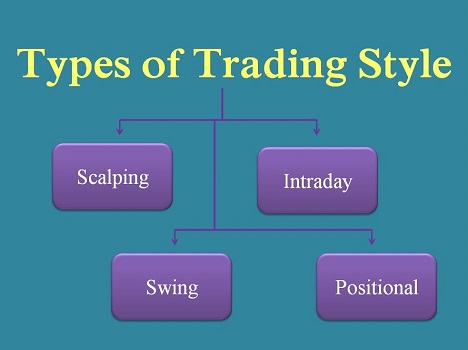
Different Types of Positions Investors Traders and Timeframes
There are a variety of trading investing methods available for investors traders to choose from whether it’s stocks, cryptocurrencies, forex and futures positions. These strategies are selected based on individual financial objectives, desired investment duration, risk tolerance, and various other factors.
Broadly speaking, three overarching trading categories exist: short-term, intermediate term, and long-term positions. However, when considering trading approaches grounded in investment strategies, two distinct methods emerge. Fundamental and technical trading.
Furthermore, when classifying trading by its duration, it falls into three categories: intraday, swing, and positional trading or what is also considered as short-term, intermediate term trading, and long-term investing.
Despite their differences, these trading styles share common elements, resulting in some overlap. For instance, technical trading aligns with short-term day trading, while fundamental trading corresponds to intermediate term to long-term positional trading.
For those new to trading investing, this article offers insight into the various types of trading positions and their respective advantages.
Defining Trading
Trading functions as the pivotal mechanism propelling the economy forward. It denotes the exchange of goods and services between multiple entities, often involving payment via currency and or exchange of products.
The arena where trading occurs is referred to as a market, which can be either organized or unorganized. Organized markets adhere to specific rules and regulations overseen by regulatory bodies to maintain market integrity. Conversely, unorganized markets lack such structure. In the context of the stock market, investing trading entails the buying and selling of shares of listed companies on stock exchanges, encompassing both primary and secondary markets.
Diverse Forms of Investing Trading Positions
Day Trading
This strategy involves buying and selling stocks within a single trading day. Traders who engage in intraday trading must sell their acquired shares by the end of the trading session. Day trading thrives on capitalizing on minor fluctuations in a stock’s net asset value NAV. Intraday trading carries relatively low risk due to its short holding period, although excessive use of margin money can elevate risk levels exponentially so be very careful using leveraged positions.
Scalping
Also known as micro-trading, scalping is characterized by its brevity. Traders conduct numerous short-duration trades to secure minor profits. The frequency of scalp trades can range from a few dozen to hundreds each day. Similar to day trading, scalp trading necessitates a grasp of technical analysis, market understanding, proficiency, and awareness of price trends. Algorithmic high-frequency trading is similar to scalping using automated trading robots to automatically trade for you instead of manually placing trades.
Swing Trading
Swing traders leverage short-term market trends and patterns. Trades executed in swing trading can span several days to several weeks, or sometimes a few months. The approach involves scrutinizing short-term to intermediate term trends to identify market patterns for trade execution.
Momentum Trading
Momentum trading exploits a stock’s momentum, focusing on stocks that are either breaking out or anticipated to do so. Traders base their decisions on the prevailing trend’s direction. For example, during upward momentum, traders buy into new positions while selling older buy-long positions for potentially greater profits, while downward movement is the opposite.
Position Trading
Position trading mirrors a buy-and-hold strategy type of trading. It necessitates maintaining positions over extended periods, disregarding minor market shifts. Profits in position trading accrue when traders wait for significant periods before selling.
Fundamental Trading
Fundamental trading employs in-depth company analysis to identify stocks. This method prioritizes company-related events and fundamental metrics. Fundamental traders maintain positions for a duration of time sufficient to allow a substantial stock price movement which can be quarter to quarter with the company’s earnings reports.
Technical Trading
Diverging from fundamental trading, technical trading centers on price trend analysis. Traders employ charts and data to time the market. This approach carries higher risk compared to positional or fundamental trading and demands market knowledge and chart interpretation skills.
Conclusion
The stock market offers a multitude of trading approaches tailored to different investment goals and risk preferences. Familiarity with these diverse trading types enables you to keep your risk as low as possible first, with high reward returns potential second.
